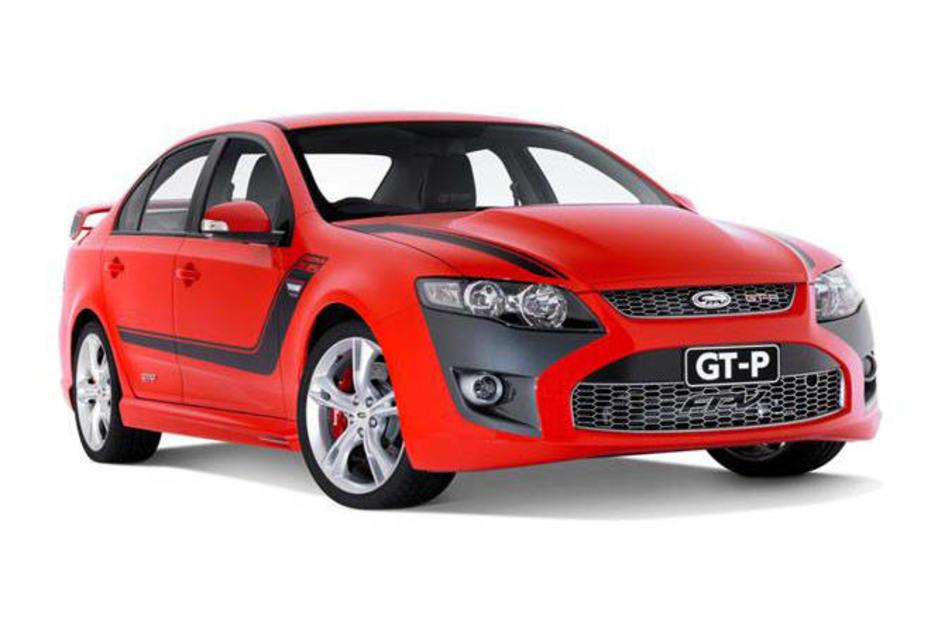
Review FPV GS/GT 2010
The company's first supercharged V8 brought the GT lineup back to the top of the FPV food chain - some say it never left it, but the turbo-six was a bit beaten by the V8 for many - and FPV general manager Rod Barrett says the company is proud of the new lineup.
“The new engine is amazing, its all-round performance frankly sets the benchmark for Australian made cars and the most interesting thing is that it was developed here for our cars,” he says.
Mr. Barrett believes FPV buyers won't be disappointed with the performance of the new GT line. “They are really presented with a new graphics package - we have created cars that fully deserve to be part of the Falcon GT heritage, and I think they will write an exciting new chapter in the history of the model,” he says.
PRICES AND DRIVE
The new FPV GS sedan is now a permanent part of the lineup, gaining special edition status from last year. The Ute starts with the GS range at $51,990 and the sedan starts at $56,990 (both with free car options), up from $49,950 and $54,950 respectively when it launched last August.
The GT starts at $71,290 (up from $67,890) with a six-speed manual or a free six-speed automatic option - FPV says that's a six percent increase in power for a four percent increase in price.
The GT-P has gone from $78,740 to $80,990 (with manual or automatic), and the GT E with automatic is $81,450 up from $79,740.
TECHNOLOGY
The new supercharged V8 was developed by FPV parent company Prodrive for $40 million and is based on the Mustang Coyote V8 engine, an all-aluminum, 32-valve, double overhead cam powertrain with a Harrop-tuned Eaton supercharger. The FPV says it's imported from the US and then hand-built using a lot of local parts, but it's 47kg lighter than the previous 5.4-liter V8.
The GS version produces 315kW and 545Nm - up from 302kW and 551Nm - but FPV says it's smoother, faster and more efficient. The GT variant now produces 335kW and 570Nm - an increase of 20kW and 19Nm - and all new supercharged V8 engines in sedans are exhaled through a four-pipe bimodal exhaust system that FPV says improves performance and exhaust sound.
Prodrive Asia Pacific Managing Director Brian Mears says the new supercharged V8 GT engine is a "car cracker" and the engine program represents Prodrive's largest investment in the Australian market. “This was the most extensive and comprehensive development program we have ever undertaken.
“We took the engine from North America, but it was developed by the Australians – a lot of the components are designed and supplied by the Australians, and we are proud of that,” says Mr. Mears.
Design
Don't expect major changes to the look of the flagship FPV or GS line for that matter - FPV has spent its money on internal changes in the area it considers most important - the powertrain.
The new GT and GT-P get new stripes and the Boss number change on the hood to 335 or 315 for the GS, which also gets new hood stripes.
DRIVE UNIT
It may not be a big change in styling, but powertrain changes have put Ford Performance Vehicles back into the fray. A short stroll in an automatic GS sedan offers a surprisingly refined journey - no doubt there's a supercharged V8 that does the job, but it's not rough.
The splash in or out of gear is strong, making the gearbox work hard to keep shifting smooth, but it handles well enough. The ride is stiff but has a slight degree of compliance to keep it from falling from bump to bump; the already good steering has benefited from a 30-plus-kilo weight reduction in the bow, and it points with reasonable accuracy, although it will speak for a while on more familiar roads.
When you step into the GT-P's manual, the extra horsepower is immediately apparent - the acoustic impact of the supercharger (and changes in launch order) and other tweaks have given the new supercharged top-end V8 a great note that fits the mumbo on offer.
Manual shifting is crisp but takes a lot of effort to get it to work properly. is a useful call for those who drive. It requires control, which is good if you are buying a muscle car.
A short drive in the GS Ute (with automatic transmission) showed it making good use of the extra grunt of the supercharged V8, accelerating briskly, though not quite as built as the sedan, which is no surprise.
The final piece of the puzzle is the exec-express GT E, which gets a lip spoiler indicating a bit more subtlety elsewhere, though there's nothing subtle about the speed at which it can cover the ground when asked to.
VERDICT
FPV and HSV might well say they're not in a horsepower war - at least it's high-energy policing - but Ford troops are returning to the fray armed with a top-notch transmission that will give the other brand more food. for reflection than they would like.
FPV GS / GT
Price: from $51,990 to $71,290 (GS Ute); from $ XNUMX XNUMX (GT sedan).
Engine: 32 liter 8-valve DOHC supercharged aluminum VXNUMX. Transmission: XNUMX-speed manual or automatic, rear-wheel drive with limited slip differential.Power: 315kw; 335kw.
Weight: GS 1833-1861-kg; GT 1855-1870 kgTorque: 545 Nm; 570 Nm.
Fuel consumption: GS 13.6-14.2 l / 100km, GT 13.6-13.7, tank 68 liters (Ute - 75).
Emissions: GS 324-335 g/km; GT 324-325g/km.
Suspension: independent double wishbone (front); independent control blade (rear).
Brakes: Perforated and ventilated discs on four wheels (GT Brembo 4-piston front and single-piston rear calipers; GT-P/GT E 6-piston front/4-piston rear), with anti-lock system and stability control systems. .
Dimensions: length 4970 mm (Ute 5096), width 1868 mm (Ute 1934), height 1453 mm, wheelbase 2838 mm (Ute 3104), track front/back 1583/1598 mm (Ute 1583), cargo volume 535 liters.
Wheels: 19" light alloy.
RIVAL
HSV E3 starting at $64,600.
